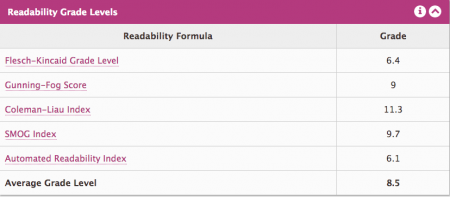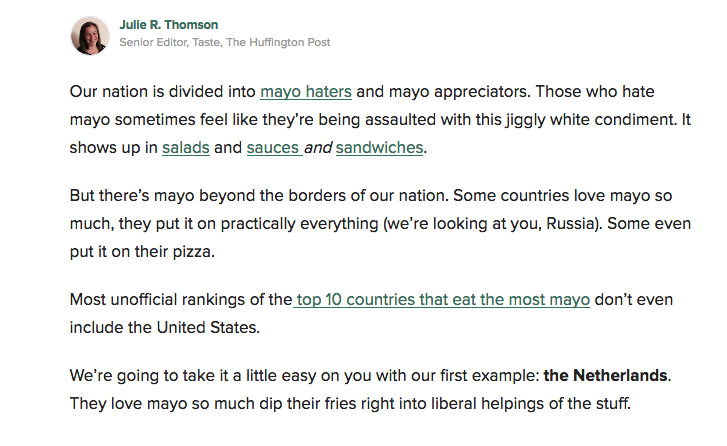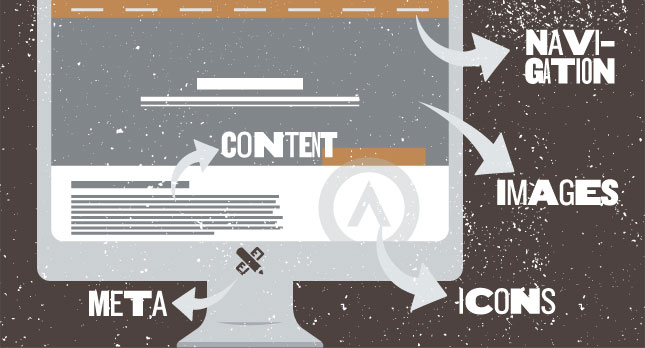Think Like a Writer

A lot of us run creative businesses, and we know how to deal with the daily tasks, how to field all of the emails, and how to manage a team, but sometimes our ideas get lost whenever we try to write our web copy. Why?
The worst websites have copy that doesn’t accurately represent their brand.
We see this all the time. Your innovative company is breaking new ground; you’re pioneering some wild ideas. Your team gets together every year to celebrate in exotic locations, and you’re always coming up with weird ideas that challenge the industry. Congrats. Look at you go. But your web copy talks about the same old ideals of customer service, loyalty, and honesty.
You might be thinking, “well…yeah. We are honest and loyal, and we love customer service. What’s wrong with that?” A lot of that is wrong. Here’s the deal. All companies that are in the business of making money are also in the business of customer service. All companies that want to make money stay loyal. Most companies act honestly. Those aren’t interesting or valuable. And they aren’t going to make people consider your product or services.
Consider being real.
Instead of throwing down some tired ideals, consider getting real. What do you really wish for your customers? What do you really think is going to happen if they buy your product? If they don’t? Your customers are going to trust you a lot more if you tell them what they need to know without the sales jargon and the BS. Without the pretty veil of fake-selling. Just tell them what’s up. What you can offer. Boom. They get the truth and they get it in a way that they like.
Find your true self.
You don’t have to meditate for hours, and we’re not going to tell you to hide out in the woods somewhere. But it is important to find your company’s real values before you update your copy.
To think like a writer, you’ve got to think about purpose. All writing is about purposefully communicating your ideas in a way that people will understand. And you can’t do that unless you know your purpose.
Here’s how you can get closer to writing real copy.
Quick brainstorm session.
You’ve done brainstorming before. But have you done lightning speed brainstorming? This is when you don’t stop writing for an entire five minutes. Pick a song that runs for five minutes. May we suggest Zepplin’s “Black Dog.”
(Go ahead and play the song twice if you need!)
Pick up pen or get ready to type.
Press play on the song above or start your timer.
Start writing. Don’t stop.
That means no backspace.
No deleting. No erasing. No censoring yourself.
To begin, answer the following questions.
Feel free to skip or add whatever you want.
Whatever you do, don’t drop your pen until you’re done.
- How would I describe my brand to a 5-year-old kid?
- How would I describe my brand to a cool 5-year-old kid?
- How would I describe my brand to my best friend’s mom?
- How would I describe my brand to someone who hates my products?
- What are three actions that my brand hates?
- What are three actions my brand loves?
- What does my brand actually provide our customers that other companies don’t?
- What does my brand aspire to be in 5 years?
- Why does my brand matter?
- What are my brand’s values?
Take it to the team.
Cool. So now take that freewrite activity and bring it to the team. Ask them to participate. See how your answers differ. Where are they the same? Are there values your team thinks are more important? Once your team answers the questions, you can collectively explore what values seem most like your brand. Then see if you have evidence to back it up. Collect testimonials, reviews, actionable goals that can back up your values.
Translate it to web copy.
Now that you’ve all agreed upon your company’s values, you can figure out how to translate it to web copy. We suggest freewriting and organizing to come up with a solid plan. We like to use Jumpchart to plan and organize our web copy, and it’s a good way to collaborate on web projects. If you’re struggling to figure out how to translate your ideas to copy, check out some of our tips:
Check your tone:
Let’s say you figured out your values. Let’s say you’re a new startup and you’re quirky, young, and causal. Cool. Rock it. Let’s say you want to start writing your web copy, and you draft a sentence like this:
Gelly is a trusted gel shoe product that transforms the ground into a comfortable oasis. Feel the dream.
That’s cool, but the tone isn’t really quirky, fun, or young, is it? It’s sort of formal. With words like “transform,” “oasis,” “product,” and “trusted,” we get a very solid idea of a company that is sort of stiff, traditional, and loyal.
Now what if you write:
Gelly’s gonna make your feet feel radical. Be cool when you run, stay dry when you walk, and gel with your friends while you dance.
The words in this version are a bit more relaxed: “radical,” “cool,” “stay,” “gel,” “friends,” “dance.”
When you’re writing your web copy, highlight the adjectives and verbs and make sure they’re reflecting what your brand’s about.
Sweat the details.
So you have your web copy ideas and your tone, and that’s great. But to really make a difference, you’ll want to sweat the details. There are a ton of spaces (besides the main web copy) where you can infuse your tone.
- About us page – make sure your new about us page copy reflects the tone, ideals, and vision that you explored above. Check those verbs and adjectives.
- 404 page – there are some great examples of hilariously innovative and awesome 404 page copy.
- Footer text – you don’t have to keep your footer text bland.
- Emails – we could do a whole ‘nother blog on drafting cool email texts, but if you don’t have time to rewrite all your emails, consider rewriting your subject lines and see what happens.
So go ahead. Figure out your values. Be the brand you’ve been meaning to be. Make your momma proud. We believe in you!


 Test thanks to http://www.webpagefx.com/tools/read-able/.
Test thanks to http://www.webpagefx.com/tools/read-able/.








